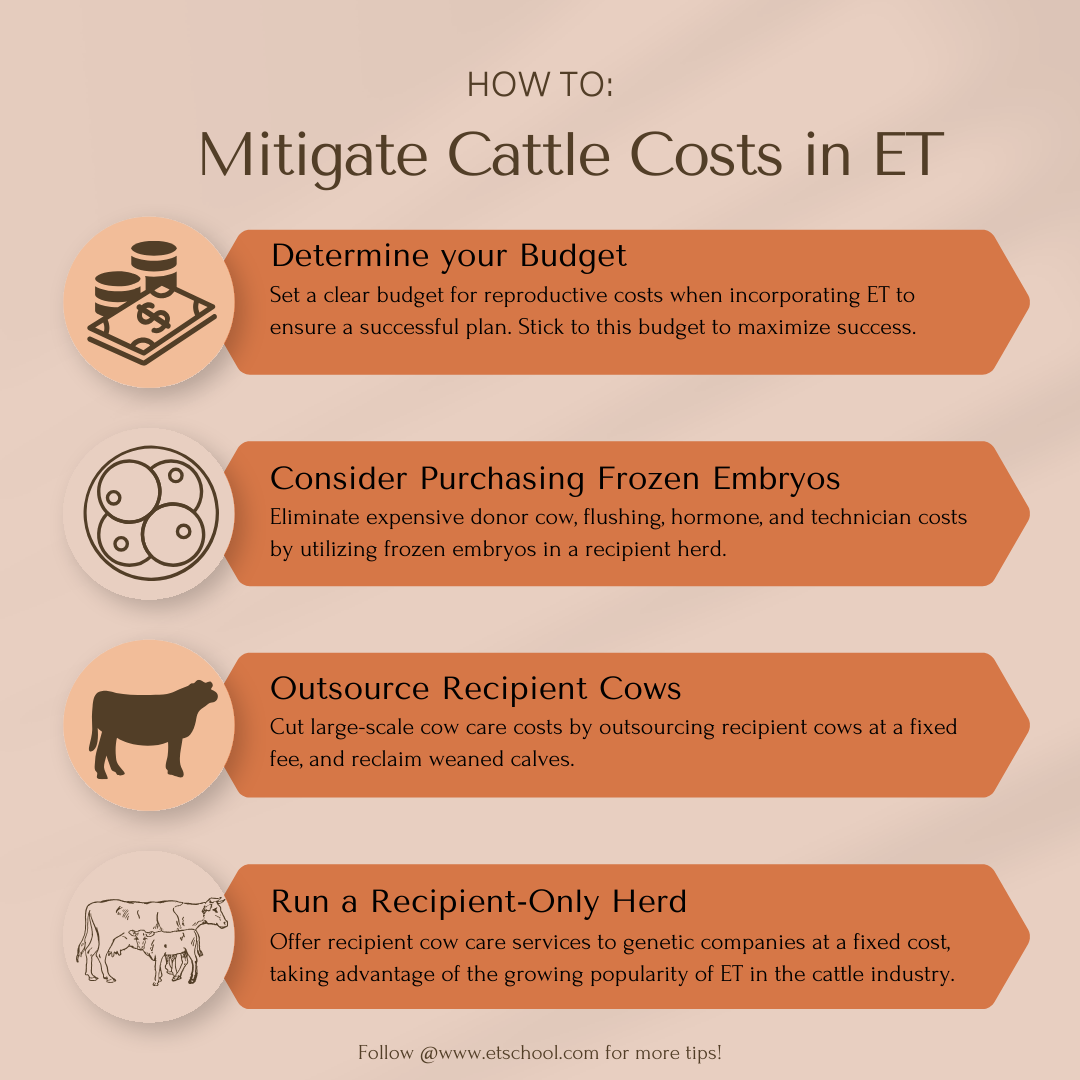
How To Mitigate Cattle Costs in Embryo Transfer

Are you interested in implementing ET, but worried about the start-up cattle costs?
Let's dive into a conversation about the expenses associated with donor and recipient cows in embryo transfer, and how you can take steps to mitigate these costs while ensuring the health and productivity of your herd.
Embryo transfer is an invaluable technique for genetic improvement in cattle, but it can be quite an investment. Donor cows, recipient cows, labor, and the whole process can quickly add up. Here are a few strategies that might help you manage those costs effectively:
- Consider Purchasing Frozen Embryos: Instead of flushing donor cows, which can be expensive due to hormonal treatments and technician costs, consider buying embryos. This can be a cost-effective way to access high-quality genetics without the need for a dedicated donor cow herd.
- Outsource Recipient Cows: Running a full herd of recipient cows can be expensive in terms of maintenance, nutrition, and labor. Outsourcing recipient cows on a contract basis can save you significant costs. You reduce input costs on the cattle maintenance side, that you can reinvest into purchasing high quality genetics. Typically, the owner of the recipient cow gets paid a small sum at ET, and then a predetermined amount per weaned embryo calf.
- Run a Recipient-Only Herd: Another approach is to maintain a recipient-only herd. This means you eliminate the need for donor cows entirely and focus solely on regular cattle care in your recipient cows. It streamlines your operation, and you can work with multiple genetic suppliers for embryos. This is a low input system with big returns. The weaned calves are contract sold back to the genetic supplier at a pre-determined cost ensuring a return on investment. However, you must maintain high quality cow-calf care to ensure the maximum weight and number of calves weaned to realize the full return.
By adopting these strategies, you can optimize your breeding program, reduce your overheads, and ensure the future success of your cattle ranch during an ever-changing economy.

|
|
|